No.132 A sound decision – Bachmann 32-480DS on analogue DC
There was mention on RMweb this week of the Class Forty
Preservation Society (CFPS) which in turn reminded me that Bachmann had produced
a Digital Sound model of D211 ‘Mauritania’. A Google search returned a model
priced at not a lot more than the current price of the non sound fitted Class
40s. I succumbed.
For use with my analogue DC controllers it was my intention
to replace the digital sound chip with a blanking plate. However on reading the
Bachmann instructions for the Class 40 (almost a first for me) I noted that the
default settings showed that sound was enabled for analogue DC. I would
investigate.
Here is what the ESU data sheet has to say about the Lok 4
decoder fitted to the Class 40:
LokSound decoders work on conventional DC layouts. From the factory, load compensation is active. This provides smooth control of your locomotives even at low speeds (in DC mode as well). Since load compensation requires about 3 – 4 Volts as ‘base voltage’ you must turn the throttle further than normal (c.f. locomotives without decoder) before the locomotive starts moving.
I use Gaugemaster DS controllers and run them entirely with
the ‘simulator’ switched on. For those of you unfamiliar with the Gaugemaster
DS, the ‘simulator’ introduces a delay between turning the control knob and the
engine responding. This is also referred to as ‘inertia’ control. Use of the
simulator also cuts the maximum power (voltage) applied to the engine. I
mention this because on my first attempt to run D211 I had the simulator
switched on and nothing happened (I thought another duff model). I repeated the
exercise and noticed that the lights had come on, but no movement. I would have
one more attempt at running the model with the sound chip inside. The lights
came on, I waited a bit longer and to my amazement the ‘engine‘ fired up and
after a rather lengthy delay the locomotive slowly moved off. I then had an
epiphany - if I switched off the ‘simulator’ would it all happen more quickly?
Yes it did – we were in business.
When you look around there are plenty of references to
running digital sound locomotives on analogue DC. Briefly the chip needs power
so nothing can happen until the control knob is switched on. Equally important
– at the end of a running session you don’t immediately switch the control knob
right off because that would kill all the power to the chip and there would be
no further sound. Instead you have to slowly decrease the power, a few
increments at a time, and this enables the chip to close the engine down and
broadcast a sequence of engine shutdown sounds. Only when all the sounds have
died down and the lights have shut off should the control knob be fully turned
off.
Stopping:
Shut Down:
Sounds and the power supplied to the locomotive motor are
loaded in sequence within the chip and are output according to the power input
from the DC controlled supply. There is one set of instructions for increasing
power and another for decreasing power. For DC operation other people have
suggested 2 volts to bring the lights on, 6 volts to start the engine and 8
volts to move off. My understanding of the Gaugmaster Controllers is that the
voltage is kept constant (around 14 volts DC) and power output is varied by
altering the frequency and lengths of pulses. My observations suggest
‘starting’ and ‘shut down’ require a control knob setting between five and six,
whilst running needs a value around eight. A little above eight and the
locomotive can emit a strong engine noise, drop the knob below eight and the
engine coasts. ‘Stopping’ seems to be activated at settings between six and
seven.
Running:
Bachmann provide ‘Hints for using the model’ – (I am
guessing for digital operation):
“F5 turns on the fuel pump, then F1 on for warm start....” (For analogue DC running that equates to switching the control knob about half scale.)
“Wait for the loco to settle into an idle rhythm......and increase the throttle...” (On analogue DC turn the control knob higher – position seven or eight.)
“Reducing or closing the throttle just a few digits will coast or return to running sound according to throttle position.” (Read for that,: when running on analogue DC small adjustments of the position of control knob above and below eight will change the running sound.)
“If more power is required open up again, but be patient to allow sound to play.” (My bold because I think being patient becomes even more important when running on analogue DC.)
“At the end of the running session reduce the throttle to zero and allow the loco to idle for approx 10 seconds.....then F1 for shut down. Wait 5 seconds and turn off....”(You have to remember that for the sound chip to make a sound it needs power. It is a case of moving the control knob down in small increments. First wait whilst the engine starts to idle and then reduce the control knob further and shutdown will commence.)
“Be patient (again) and wait for the sound to reach your throttle position before making sudden changes, drive to the sound produced by the model.”(My bold again because when running on analogue DC there are no function (F) keys to press and you have to rely on making subtle changes to the control knob to shift from one sound to another.)
It also becomes apparent that the speed of the locomotive is
dictated by the embedded settings within the chip. The position of the control
knob should be viewed as a setting for a particular running condition rather
than as a variable speed control. For each setting the chip contains a target
speed together with incremental steps to reach that speed. The result is a
smooth increase (or decrease) in speed between control knob settings in much
the same way that the Gaugemaster simulator gradually ramps the speed up or
down in response to changes in control knob position.
I am amazed at how much play value there is in ‘driving’ the
digital sound locomotive. I am still on a learning curve but the following
compilation video hints at what is possible. I was holding the camera with one
hand and moving the control knob with the other – well, that is my excuse for
the rather bouncy pictures.
Compilation:
Will I purchase another Digital Sound locomotive? Possibly
(bank manager / wife permitting). Running on analogue DC comes literally
without a lot of the bells and whistles although you can hear the screech of
brakes. Even without all the detail the engine noise is full of nostalgia.
Would I want all my engines sound enabled? No. It is surprising how much noise
is emitted by one engine. The volume completely drowns out the clickety click
sound from the carriages. I would say that after a short session with sound,
running a non-sound locomotive comes as a bit of a relief. (With full digital
control there is the capability of reducing sound levels – that might be a
bonus.)
Am I going to change to DCC operation? No. Coincidently my
last Blog Post showed the complexity of the current wiring beneath my analogue DC
layout. As others have observed, DCC operation could require much more with
some people recommending connections to every length of rail and separate
microswitches for all the points. I cannot see that happening here! If I can
run the odd Digital Sound locomotive – why should I change?
What about the appearance of D211? There are number of views
below comparing the earlier 2007 Bachmann model of D210 ‘Empress of Britain’
with ‘Mauritania’. From a distance there seems little to choose between D210
and D211.
However on closer inspection there are subtle changes to the
body shape and some more obvious changes to handrails and lamp irons which I
believe had been added erroneously by Bachmann to the early model.
Rubbing noses Bachmann D211 ‘Mauritania’ ( R ) with D210
‘Empress of Britain’ ( L )
Spot some differences to the under frame, Bachmann D211 ‘Mauritania’ ( R ) with D210 ‘Empress of Britain’ ( L )
This Blog post is about Bachmann 32-480DS. It was bought new
and the default settings for the chip include running on analogue DC. My
understanding is that both the ESU Lok 3.5 and 4.0 chips will produce sound on
analogue DC. However not all Bachmann locomotives are shipped with chips set at
their default settings. Straight out of the box some Bachmann models will not
produce sound on DC analogue and may not even run with the digital chip in
place. I am guessing that for these models the access to a digital system is
needed to reset the chip to the default values. I have no knowledge or
experience of Hornby TTS locomotives so may have to stand corrected but from
comments on the ‘web’ these models cannot produce sound on analogue DC.
Well it is 01 May this weekend and we are still getting
snow. It is definitely not gardening weather so time to go and play!
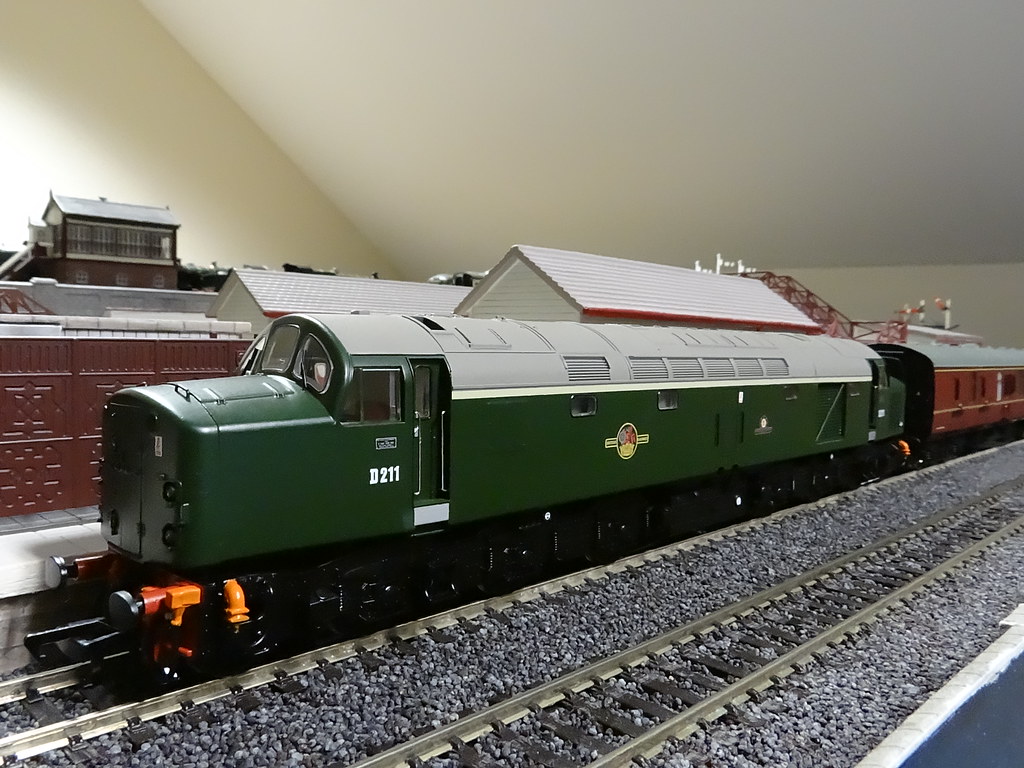
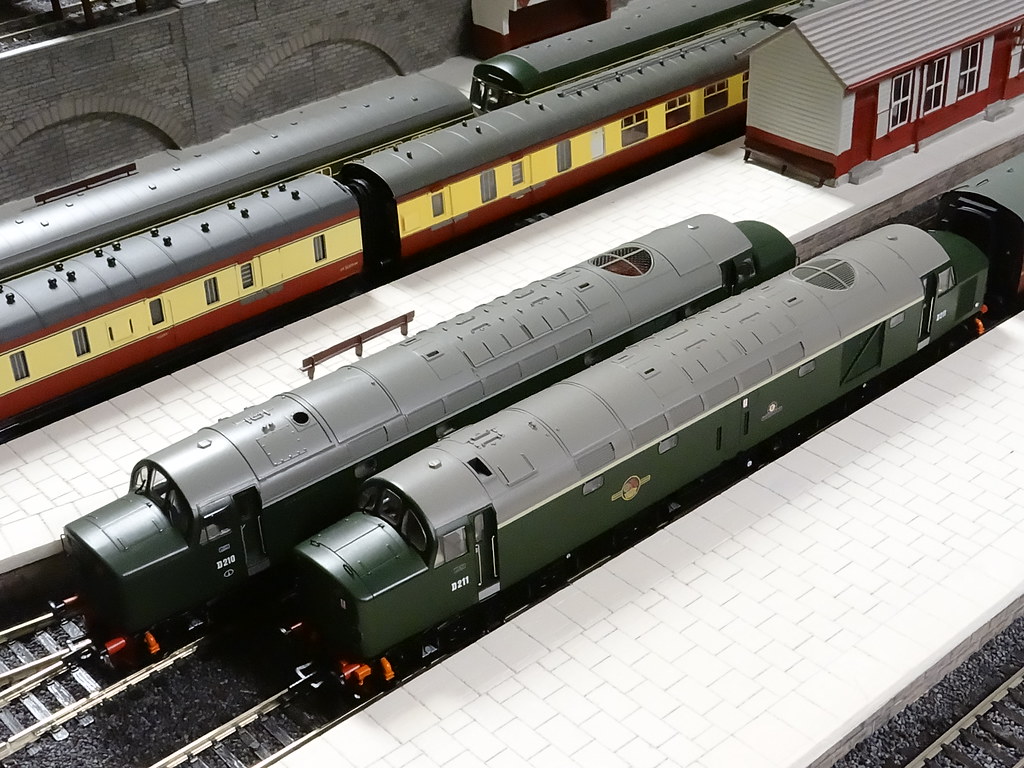

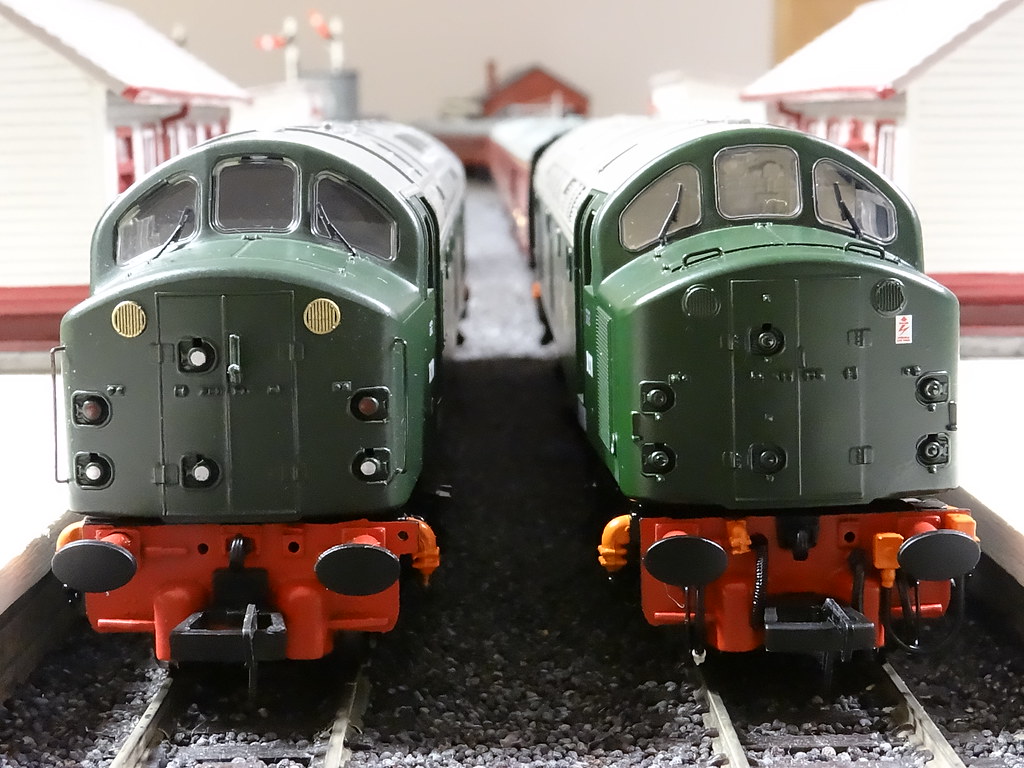
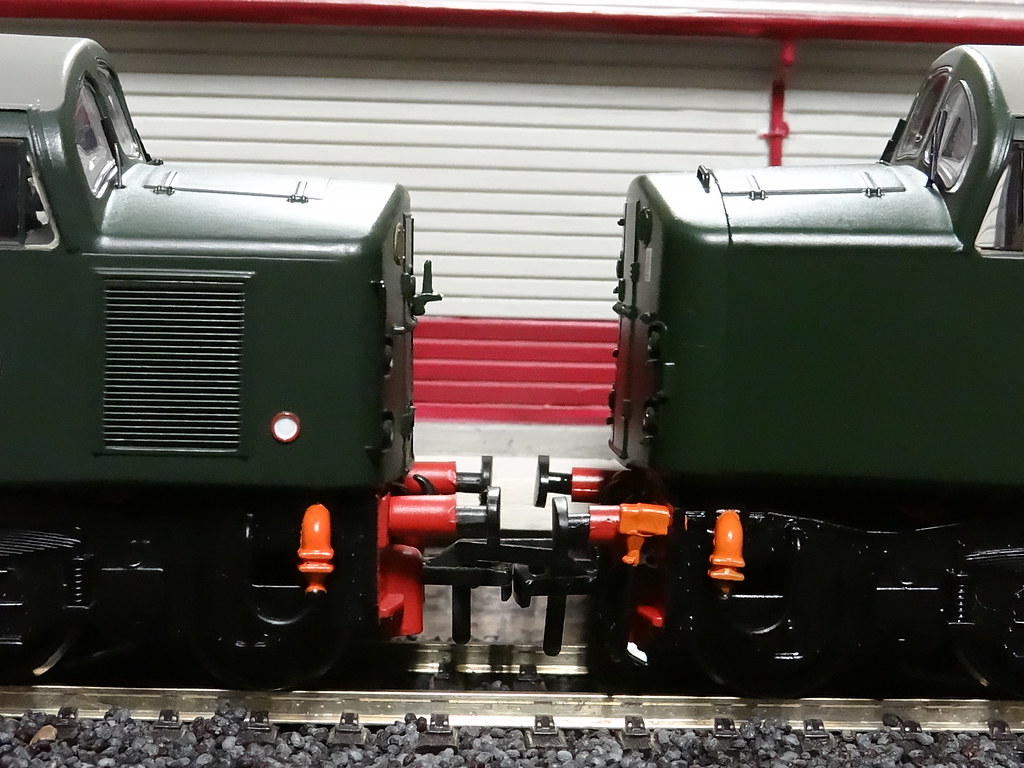
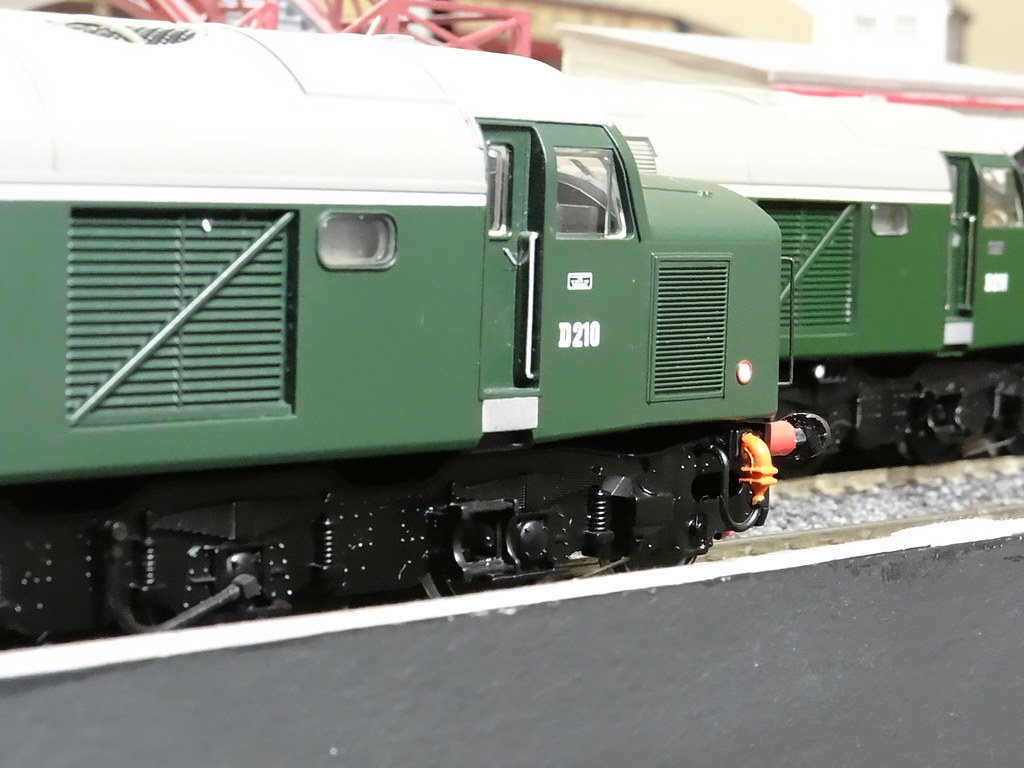
Comments